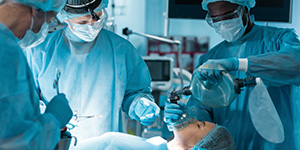Nosebleeds are a common occurrence in hospitals and clinics, often causing distress to patients and posing challenges for healthcare providers. Effective management of these incidents is crucial to prevent complications and enhance patient outcomes. Enter NasaClip, an innovative device that’s changing the landscape of nosebleed treatment in clinical settings.
Understanding Nosebleeds
Nosebleeds, medically known as epistaxis, are a common presentation in various healthcare settings, from primary care offices to emergency departments. They can affect patients of all ages, though they are particularly common in children and older adults.
Nosebleeds are categorized into two main types:
- Anterior nosebleeds: These originate in the front part of the nose and account for approximately 90% of all cases.
- Posterior nosebleeds: Less common but potentially more serious, these originate deeper in the nasal cavity.
NasaClip’s Advantages
One of NasaClip’s key advantages is its hands-free design, ensuring that pressure is maintained without patient or provider fatigue. This continuous pressure is vital in supporting the body’s clotting process, leading to quicker resolution of nosebleeds. NasaClip’s effectiveness lies in its ability to provide constant, uninterrupted pressure – a critical factor in stopping nosebleeds and supporting the body’s natural clotting process. The body’s natural clotting process is a complex cascade of events that requires a stable environment to proceed effectively. By providing uninterrupted pressure, NasaClip creates ideal conditions for clot formation and stabilization. This support of the physiological clotting process can lead to faster resolution of nosebleeds and reduce the likelihood of re-bleeding. Unlike traditional nasal packing, NasaClip offers a non-invasive alternative, reducing patient discomfort and improving compliance. This patient-friendly approach can lead to better outcomes and increased satisfaction with treatment.
Administrative Benefits of NasaClip
NasaClip’s versatility allows for easy application in various clinical settings, from emergency departments to outpatient clinics. It can be seamlessly integrated into existing hospital protocols, providing a quick and effective solution for managing anterior nosebleeds.
To maximize the benefits of NasaClip, it’s crucial to train clinical staff on its proper use. This ensures consistent and effective treatment outcomes. Additionally, educating patients about NasaClip’s benefits and proper usage can empower them to manage nosebleeds more effectively, both in clinical settings and at home when recommended by their healthcare provider.
Emergency Room Efficiency
Dr. Elizabeth Clayborne, the inventor of NasaClip, highlights how this device can significantly improve efficiency in emergency room settings, where a large number of nosebleed cases are typically treated. The implementation of NasaClip in ERs offers several key advantages:
Early Intervention: NasaClip allows for care to be initiated early in the evaluation process, potentially by a triage nurse. This means patients don’t have to wait for a doctor to begin treatment, reducing overall wait times and improving patient flow.
Resource Optimization: By providing a quick and effective solution for nosebleeds, NasaClip helps free up valuable ER resources. Patients with nosebleeds can be treated without occupying a bed, allowing these spaces to be used for more critical cases.
Faster Response Times: The ease of use and effectiveness of NasaClip contribute to quicker response times in treating nosebleeds. This can lead to improved patient satisfaction and more efficient ER operations.
NasaClip represents a significant advancement in nosebleed management. Its ability to provide constant, hands-free pressure supports the natural clotting process, offering a non-invasive and effective solution for anterior nosebleeds. By incorporating NasaClip into treatment protocols, healthcare providers can enhance patient care, reduce treatment times, and improve overall outcomes in nosebleed management. NasaClip offers a revolutionary approach to managing nosebleeds in clinical settings. Its innovative design addresses many of the challenges associated with traditional nosebleed treatments, providing a more efficient and patient-friendly solution. As healthcare continues to evolve, tools like NasaClip play a crucial role in improving patient care and streamlining clinical processes.
For more detailed information on NasaClip and its benefits for clinical practice, visit SourceMark Medical or contact us to learn how this tool can support your hospital’s nosebleed management efforts.









